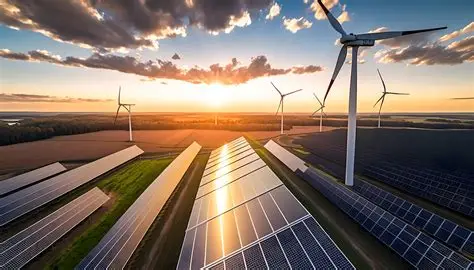In the first half of 2025, a milestone was crossed: 𝐠𝐥𝐨𝐛𝐚𝐥 𝐫𝐞𝐧𝐞𝐰𝐚𝐛𝐥𝐞 𝐞𝐥𝐞𝐜𝐭𝐫𝐢𝐜𝐢𝐭𝐲 𝐠𝐞𝐧𝐞𝐫𝐚𝐭𝐢𝐨𝐧 (𝐬𝐨𝐥𝐚𝐫 + 𝐰𝐢𝐧𝐝) 𝐫𝐞𝐚𝐜𝐡𝐞𝐝 5,072 𝐓𝐖𝐡, surpassing 𝐜𝐨𝐚𝐥’𝐬 4,896 𝐓𝐖𝐡.
🔍 𝐖𝐡𝐚𝐭’𝐬 𝐃𝐫𝐢𝐯𝐢𝐧𝐠 𝐭𝐡𝐞 𝐒𝐡𝐢𝐟𝐭?
1. 𝑨𝒔𝒊𝒂’𝒔 𝑳𝒆𝒂𝒅𝒆𝒓𝒔𝒉𝒊𝒑: 𝑪𝒉𝒊𝒏𝒂 & 𝑰𝒏𝒅𝒊𝒂 𝒂𝒕 𝒕𝒉𝒆 𝑯𝒆𝒍𝒎:
China expanded its 𝐬𝐨𝐥𝐚𝐫 𝐨𝐮𝐭𝐩𝐮𝐭 𝐛𝐲 43% and 𝐰𝐢𝐧𝐝 𝐛𝐲 16%, while actually cutting fossil fuel generation by ~2%.
India’s solar and wind generation grew by 31% 𝐚𝐧𝐝 29%, respectively, while its reliance on coal and gas dropped by ~3.1%.
2. 𝑺𝒐𝒍𝒂𝒓: 𝑻𝒉𝒆 𝑬𝒏𝒈𝒊𝒏𝒆 𝒐𝒇 𝑮𝒓𝒐𝒘𝒕𝒉
Solar alone met 83% 𝒐𝒇 𝒕𝒉𝒆 𝒊𝒏𝒄𝒓𝒆𝒂𝒔𝒆 in global electricity demand in H1 2025, while wind added another ~97 TWh.
In many markets today 𝐧𝐞𝐰 𝐬𝐨𝐥𝐚𝐫 𝐢𝐧𝐬𝐭𝐚𝐥𝐥𝐚𝐭𝐢𝐨𝐧𝐬 𝐚𝐫𝐞 𝐜𝐡𝐞𝐚𝐩𝐞𝐫 𝐭𝐨 𝐛𝐮𝐢𝐥𝐝 𝐚𝐧𝐝 𝐫𝐮𝐧 𝐭𝐡𝐚𝐧 𝐞𝐱𝐢𝐬𝐭𝐢𝐧𝐠 𝐜𝐨𝐚𝐥 𝐩𝐥𝐚𝐧𝐭𝐬.
3. 𝐅𝐨𝐬𝐬𝐢𝐥 𝐅𝐮𝐞𝐥𝐬 𝐅𝐢𝐠𝐡𝐭 𝐁𝐚𝐜𝐤 (𝐄𝐬𝐩𝐞𝐜𝐢𝐚𝐥𝐥𝐲 𝐢𝐧 𝐭𝐡𝐞 𝐖𝐞𝐬𝐭)
U.S. coal generation rose 17% in H1 2025, even as gas generation fell ~4%.
In the EU, both coal and gas saw increases (coal +1.1%, gas +14%) due in part to weakened hydro output.
💡 𝐖𝐡𝐲 𝐓𝐡𝐢𝐬 𝐌𝐨𝐦𝐞𝐧𝐭 𝐌𝐚𝐭𝐭𝐞𝐫𝐬
a) The shift validates the 𝐢𝐧𝐯𝐞𝐬𝐭𝐦𝐞𝐧𝐭 𝐚𝐧𝐝 𝐩𝐨𝐥𝐢𝐜𝐲 𝐜𝐚𝐬𝐞 for scaling solar and wind as reliable mainstream energy sources.
b) Renewables have met global electricity demand growth 𝐰𝐢𝐭𝐡𝐨𝐮𝐭 𝐢𝐧𝐜𝐫𝐞𝐚𝐬𝐢𝐧𝐠 𝐜𝐨𝐚𝐥 𝐨𝐮𝐭𝐩𝐮𝐭, marking a key decoupling from fossil fuels.
c) To sustain progress, 𝐠𝐫𝐢𝐝 𝐢𝐧𝐟𝐫𝐚𝐬𝐭𝐫𝐮𝐜𝐭𝐮𝐫𝐞 𝐚𝐧𝐝 𝐬𝐭𝐨𝐫𝐚𝐠𝐞 𝐬𝐲𝐬𝐭𝐞𝐦𝐬 must expand to handle renewable variability.
🌱𝐓𝐡𝐞 𝐑𝐨𝐚𝐝 𝐀𝐡𝐞𝐚𝐝
The data from H1 2025 is more than milestone it’s a signal. The global energy paradigm is shifting. Coal still exists especially in legacy systems, but the momentum now tilts decisively toward wind and solar.
As renewables continue to command growth, we could truly be on the cusp of a cleaner, more resilient power future. Good thing to see is, Asia contributing significantly to this is driving the global energy transition, and keeping the overall emissions globally in control.














